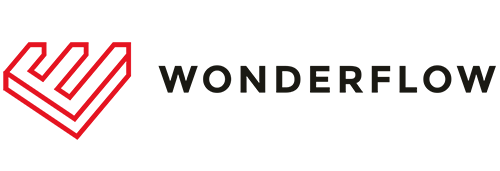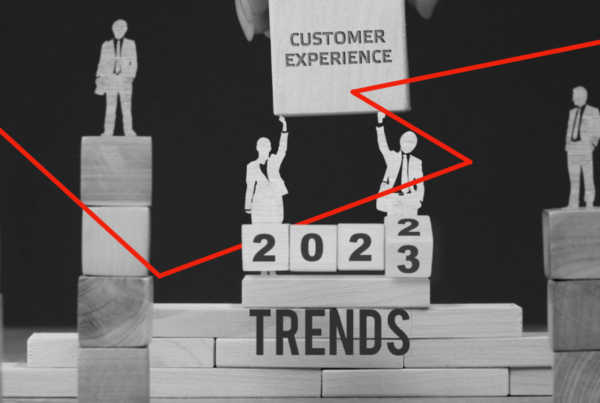As part of our Voice of the Customer (VoC) interview series, Stefano Percorari, Client Success Director at Wonderflow, is joined today by Angelo Asciano, the Director of Customer Operations at ENERCOM.
Formally known as ENERCOM SRL, the Italian company is one of the largest privately-owned providers of methane gas to end consumers. With a background in Economics, Asciano has been at ENERCOM for nearly ten years, guiding the organization in Customer Care Management. We are delighted to learn a thing or two from the energy industry leader regarding the opportunities and challenges that come with preparing for a data-driven future in customer experience.
Read on to learn more.
1. Stefano Percorari, Client Director at Wonderflow: Ciao, Angelo! Thank you for joining us. We know you’ve been very busy, but we’re grateful for your time. First, on a scale of 1 to 10, how important is the Voice of the Customer to ENERCOM?
Angelo: Definitely a 10! It is as simple as it is perhaps trivial to express how important the customer’s opinion is for us at ENERCOM.
Even more so, ENERCOM is Utility. Its core business is the sales of gas, energy, and energy-efficiency products in a highly competitive market. Such a market has distinctive and competitive elements that are, essentially, about price and service.
Therefore, listening to the customer’s opinion, in this case, is essential. It comes with a belief in continuous improvement of the service. Thus, our organization believes we must improve our ability to satisfy customers’ needs in an increasingly dynamic context.
2. Stefano: Why does your company want to understand its customers better? Was it related to a specific event or decision?
Angelo: Considering that ENERCOM was initially born in a virtually monopolist market (where we were dealing with users forced to choose us and where there was the liberalization of the market), these very users have become our own customers in the end. They also have had the option of choosing between different prices and service propositions.
As a result, this eventually led to ENERCOM’s desire to listen to its customers actively. The company prioritizes the customers’ needs at the center of its actions and a strategic level; we focus on proximity and the services offered.
Customer centricity in ENERCOM, therefore, has become a mantra. It is the need to understand customer requests that it becomes essential for us to evolve quickly. This all depends on the context and possible areas of improvement where we can intercept to help improve customer satisfaction. Essentially, it is about just making everything better and better.
Experience at every stage of the customer journey is consistent.
3. Stefano: Can you describe the challenges you faced when transforming your company into a more customer-centric one?
Angelo: Surely the most relevant challenges to becoming customer-centric are the cultural and organizational issues.
As a first example, it has always been important for us to create a working group comprised of k-users with cross-functional skills already in the project start-up phase. What is fundamental in cases like these is the commitment set by higher management, which did have a lot of faith for us in this project and right from the start.
With the second challenge, many people were involved, and some through training sessions. All of this then becomes a change in organizing projects, no longer by functional scope but by matrix.
Additionally, to overcome such matters, it’s through sharing experiences and different skills, letting oneself be guided by data and the customer’s opinion, and finding ever-improving and shared solutions.
4. Stefano: How has your working style changed over the years? For instance, after you began prioritizing customer feedback analysis at your company, what changed? Please share examples.
Angelo: In this case, the path of ENERCOM is at the beginning. We started working on this project for just over a year. The change is underway, but the first effects are evident…
An example is an approach that has been adopted by our web management, where through group work and available data, we were able to identify aspects that could be improved immediately. We did so through simple, quick actions.
At the same time, we planned more substantial interventions where it was necessary. We did so by identifying priorities in a univocal and shared way. Also, this is meant by letting ourselves be guided simply by the “voice of the customer.”
In the past, our decision-making process and the solutions’ effectiveness, as a result, were certainly lower than they are now. This is precisely because there was insufficient support for the kind of data we have now and the teams we have now.
5. Stefano: What are some barriers that companies can improve on while leveraging deep consumer insights?
Angelo: Companies can improve on changing their approach to identifying their own priorities and the speed of their action plans.
Having this type of data now available puts you in front of a mirror; it shows you what you really are as a brand and for which will almost certainly be different. Or, at least, in part, from what you think you are.
So, the first barrier to break down is the approach – being willing to get involved and being ready to improve. Also, to enhance your ability to react to information by responding consistently and timely. Otherwise, listening to the customers’ sentiments will remain an end in itself.
6. Stefano: Can you tell us a ‘Eureka!’ moment related to when you learned something extraordinary, all thanks to customer feedback?
Angelo: A very simple but significant example was when we checked the data and found a problem with the online process of the bank domiciliation linked to customer contracts.
By analyzing the chat conversations then, we immediately identified the critical issue. And through a graphic modification (which was not particularly expensive in terms of company time and costs), we resolved an issue that was making many of our customers uncertain.
7. Stefano: What is your company’s shared vision regarding the future where the Voice of the Customer will continue to prevail? Any new ideas or plans to achieve more customer-centricity?
Angelo: Our project started as Poc, being able to detect customer sentiment on some of our available channels. Telephone and chat conversations, in particular
We’ve been working in two directions: to expand those existing monitored channels and the connections between the data identified with our NPS.
For the expansion of the channels, our primary goal will be to collect information from all available contact points, both digitally and physically. So, in this case, ENERCOM has adopted a “phigital” strategy. It integrates a strong territorial presence with over 35 physical stores and an equally-consistent digital experience.
Controlling customer sentiment throughout the different contact points will be essential for us to arrive at a more fluid and fully-satisfying user experience.
The connection to the NPS satisfaction will be essential to directly measure our decisions’ and actions’ effects on the customer experience.
For more on the future, we are already working on projects that involve integrated platforms. Also, introducing new technologies, such as AI, to better communicate with the customer.
Stefano: That’s all for now, Angelo! We can’t thank you enough. Your advice can surely elevate other energy market leaders. It will also be exciting to continue working with ENERCOM and see where VoC data takes the company. Speak soon!




